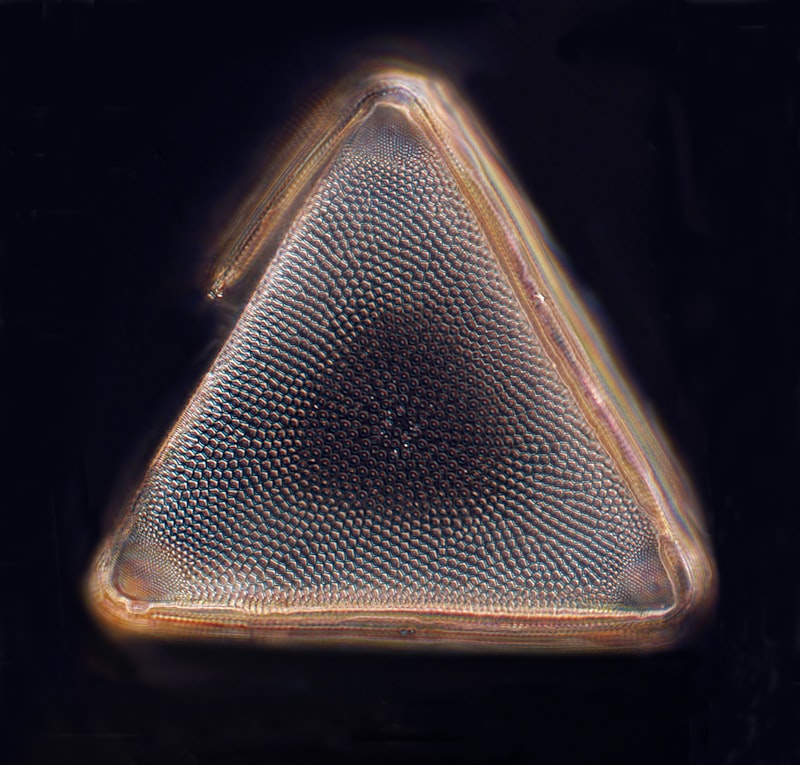At the heart of their aquatic prowess lies biomechanics, the study of how organisms move. Marine mammals like dolphins, seals, and whales have adapted their bodies for swimming through a combination of streamlined shapes and powerful muscles. Their bodies are streamlined to minimize drag, allowing them to glide through water with minimal resistance. This streamlined shape reduces turbulence and conserves energy, crucial for long-distance swimming.
Their powerful muscles provide the propulsive force needed to propel through water. Muscles along their bodies, particularly in their tails and flippers, contract in coordinated waves, creating thrust and forward motion. This motion mimics the undulating movement of a wave, efficiently converting muscle power into forward propulsion. It’s a synchronized dance of muscle contractions and water resistance, enabling these mammals to reach impressive speeds and maneuver with agility.
But it’s not just about speed; marine mammals also excel in diving and maneuverability. Their ability to control buoyancy, adjust swimming depth, and execute sharp turns showcases their mastery of underwater biomechanics. Dolphins, for example, can dive deep and leap high, utilizing their streamlined bodies and powerful tails to navigate both above and below the waves.
Biomechanics also plays a role in the thermoregulation of marine mammals. Their adaptations help them manage heat exchange in water, where temperatures can vary significantly. By regulating blood flow and using insulating layers of blubber, these animals maintain core body temperature despite changing aquatic conditions.
Unveiling the Secrets: How Marine Mammals Navigate Water with Perfect Precision
At the heart of their prowess is a blend of biological marvels and finely tuned instincts. Take the dolphin, for instance. Known for their playful acrobatics, dolphins possess an innate sense of echolocation. By emitting high-frequency clicks and interpreting the echoes that bounce back, they create intricate mental maps of their surroundings. This allows them to detect prey, avoid predators, and navigate vast ocean expanses with unparalleled accuracy.
Similarly, whales, despite their immense size, display astonishing navigation abilities. Migration patterns spanning thousands of miles showcase their navigational precision. Scientists believe that whales navigate using a combination of celestial cues, like the position of the sun and stars, and Earth’s magnetic field. These natural compasses guide them through extensive journeys, ensuring they reach breeding grounds or feeding areas with remarkable consistency.
Moreover, marine mammals exhibit adaptability in their navigation strategies. In changing oceanic conditions, such as shifting currents or varying temperatures, they adjust their routes accordingly. This flexibility underscores their ability to thrive in dynamic marine environments.
Understanding these navigation techniques isn’t just about admiring their biological feats—it also offers insights into conservation efforts. By studying how marine mammals navigate, scientists can better protect their habitats and migration routes from human-induced threats like pollution and habitat destruction.
In essence, the secrets behind how marine mammals navigate water with perfect precision unveil a world of biological wonders. From echolocation to celestial navigation, these creatures exemplify nature’s ability to adapt and excel in the most challenging of environments. As we continue to unravel these mysteries, we deepen our appreciation for the marvels of marine life and the importance of preserving their oceanic homes.
From Flippers to Fins: The Evolutionary Wonders of Marine Mammal Swimming
Marine mammals, such as dolphins, whales, and seals, have adapted over millions of years to thrive in aquatic environments. Their streamlined bodies, often tapering to powerful tails, minimize drag and maximize efficiency as they navigate through the water. This sleek design allows them to achieve impressive speeds and agility, crucial for hunting prey or evading predators.
One of the most fascinating aspects of their evolution is the development of specialized limbs or flippers. These appendages, modified from their terrestrial ancestors’ limbs, play a pivotal role in their swimming techniques. For instance, dolphins use their dorsal fins and flippers to steer with precision, swiftly changing directions as they pursue schools of fish. Similarly, seals rely on their strong front flippers to propel themselves through the water with graceful strokes, enabling them to maneuver gracefully in their aquatic habitats.
Beyond their physical adaptations, marine mammals exhibit remarkable physiological capabilities that enhance their swimming abilities. Their lungs, for instance, store large volumes of oxygen, allowing them to remain submerged for extended periods. This adaptation is crucial for deep-diving species like sperm whales, which can descend to great depths in search of squid and other deep-sea prey.

The evolutionary journey from land to sea has also shaped their sensory systems. Echolocation, used by dolphins and some whales, enables them to navigate and locate prey by emitting high-frequency clicks and interpreting the echoes that bounce back. This sophisticated form of underwater sonar highlights the adaptability and intelligence of these remarkable animals.
Efficiency in Motion: How Marine Mammals Use Biomechanics to Swim Faster
Firstly, picture a dolphin slicing through the waves. Its sleek body and muscular flukes are marvels of evolution, finely tuned for aquatic life. Dolphins, like many marine mammals, have streamlined shapes that reduce drag as they move through water. This hydrodynamic design minimizes resistance, allowing them to swim faster with less effort. It’s akin to a sleek sports car effortlessly speeding down a highway.
But it’s not all about shape. Biomechanics also involves how muscles and bones work together to produce movement. Marine mammals have powerful muscles that contract with incredible force, propelling them forward with each stroke of their fins or flippers. Think of it like an Olympic swimmer’s precise movements in the water, where every muscle fiber works in harmony to maximize speed and efficiency.
One of the most fascinating adaptations is their use of blubber. This thick layer of fat beneath the skin not only insulates them from cold waters but also acts as a store of energy. It provides buoyancy and streamlines their bodies even further, helping them maintain their swift pace over long distances. Imagine it as a built-in wetsuit that enhances both speed and endurance.
Another biomechanical marvel is the way marine mammals use their tails. Whales, for instance, have horizontal tail flukes that move up and down to generate thrust. This motion creates forward propulsion, much like a propeller on a boat. The efficiency of this movement is astounding, allowing these giants of the sea to reach impressive speeds despite their size.
The biomechanics of marine mammals are a testament to nature’s ingenuity. From their streamlined shapes to their powerful muscles and specialized adaptations like blubber and tail flukes, every aspect is finely tuned for efficiency in motion. Next time you see a dolphin racing alongside a boat or a whale breaching the surface, marvel at how these creatures have mastered the art of swimming faster through the sheer brilliance of biomechanics.
Fluid Dynamics: The Science Behind the Graceful Swimming of Whales and Dolphins
At the heart of their elegance lies an understanding of hydrodynamics, the study of fluids in motion. Whales, with their streamlined bodies and powerful tails, minimize drag and maximize efficiency as they propel themselves forward. Dolphins, known for their playful agility, harness vortices and turbulent flows to dart through the water with unrivaled speed and precision.
What makes their swimming so remarkable is the interplay between forces like drag, lift, and thrust. Just as a skilled dancer manipulates the air around them, these marine mammals manipulate water to achieve their astonishing maneuvers. Picture the flow of water over their bodies, sculpted to reduce resistance and enhance control—a testament to millions of years of evolutionary refinement.
In essence, fluid dynamics unveils nature’s genius in these marine marvels. It explains how whales, despite their size, navigate with such grace, and how dolphins effortlessly surf the waves. Every flick of a fin, every gentle undulation, tells a story of adaptation and survival in an aquatic world where mastery of fluid dynamics means the difference between life and death.
As we marvel at these creatures, we glimpse the elegance of nature’s design—a symphony of movement choreographed by the laws of fluid mechanics. From the majestic blue whale to the acrobatic spinner dolphin, each species reveals a different facet of how fluid dynamics shapes life beneath the waves.
Harnessing Hydrodynamics: Insights into Marine Mammal Propulsion Systems
Have you ever marveled at the effortless grace with which dolphins slice through the water, or the sheer power behind a whale’s mighty tail fin? These marine mammals are not just fascinating creatures of the sea; they are also masters of hydrodynamics, using their streamlined bodies and unique propulsion systems to navigate their underwater world.
One of the key secrets to their aquatic agility lies in their streamlined bodies. Just like a well-designed submarine, marine mammals have evolved over millions of years to minimize drag and maximize efficiency. Their bodies are sleek and tapered, reducing resistance as they move through the water. This streamlined shape allows them to glide effortlessly, conserving energy while maintaining impressive speeds.
But it’s not just their shape that sets them apart—it’s also their propulsion systems. Dolphins, for example, rely on their powerful tail flukes to generate thrust. With each powerful stroke, they propel themselves forward, using the water’s resistance to their advantage. It’s a bit like a swimmer using their legs to push off the pool wall, only on a much grander scale.
Whales, on the other hand, harness the strength of their massive tails to achieve incredible speeds. The sheer size and strength of a whale’s tail fin allow them to generate immense propulsion with each beat, propelling their enormous bodies through the water with astonishing force. It’s akin to a high-performance engine driving a sleek sports car, combining power and efficiency in a single, awe-inspiring package.
These propulsion systems aren’t just feats of biological engineering—they’re also marvels of evolutionary adaptation. Over millennia, marine mammals have fine-tuned their bodies and behaviors to thrive in their aquatic habitats. From the playful spins of a dolphin to the majestic breaches of a humpback whale, each movement is a testament to the incredible power and precision of nature’s design.
Understanding how marine mammals harness hydrodynamics isn’t just a matter of scientific curiosity—it’s also a source of inspiration for engineers and designers. By studying the ways in which these creatures navigate their underwater world, researchers can glean insights that may one day shape the future of marine technology. Imagine submarines that move with the grace of a dolphin or ships that harness the power of a whale’s tail—these are just some of the possibilities that lie ahead.
In the end, the study of marine mammal propulsion systems is more than just a scientific endeavor; it’s a journey into the heart of nature’s ingenuity. It reminds us of the remarkable diversity of life on Earth and the endless possibilities that arise when we look to the natural world for inspiration. So the next time you marvel at a dolphin’s leap or a whale’s dive, take a moment to appreciate the incredible hydrodynamic feats that make it all possible.
Speed and Agility: Breaking Down the Biomechanics of Seal and Sea Lion Swims
Seals and sea lions propel themselves through the water with incredible efficiency, thanks to their streamlined bodies and powerful flippers. Unlike fish that use their tails for propulsion, these mammals primarily rely on their forelimbs, which act like wings in flight. This unique swimming technique allows them to achieve impressive speeds and maneuverability underwater.
The key to their speed lies in the rhythmic movements of their flippers. By generating thrust with each stroke, they minimize drag and maximize forward propulsion. This stroke-by-stroke efficiency is akin to a skilled sprinter pushing off from the starting blocks, utilizing every ounce of energy to surge ahead.
Agility, on the other hand, is a testament to their ability to change direction swiftly. Seals and sea lions can make sharp turns and sudden dives, crucial for hunting and evading predators. Their flexible bodies and acute sensory perception enable them to navigate complex underwater environments with ease.

Biomechanically, their adaptations for swimming include specialized muscles that power their strokes and maintain body position. Their skeletal structure supports streamlined movement, reducing resistance in the water and optimizing energy expenditure.
In essence, observing these marine mammals in action is like witnessing nature’s acrobats performing a synchronized dance underwater. Their movements are not just functional but also elegant, showcasing millions of years of evolutionary refinement in pursuit of aquatic excellence.
Frequently Asked Questions
What are the key biomechanical differences between marine mammals and fish in swimming
Learn about the fundamental biomechanical variances in swimming between marine mammals and fish, highlighting adaptations such as streamlined body shapes and fin placements in fish for efficient propulsion, whereas marine mammals utilize limb adaptations and undulating body movements for swimming efficiency.
How do marine mammals conserve energy while swimming
Discover how marine mammals efficiently conserve energy during swimming. Learn about their streamlined bodies, efficient swimming techniques, and unique adaptations that minimize energy expenditure.
What role does hydrodynamics play in the swimming performance of marine mammals
Discover how hydrodynamics influences the swimming abilities of marine mammals, exploring their streamlined shapes and efficient propulsion techniques.
How does body shape influence swimming efficiency in marine mammals
Body shape significantly affects swimming efficiency in marine mammals. Streamlined bodies reduce drag, enabling faster speeds and efficient movement through water. Different shapes, such as fusiform or torpedo-like bodies, optimize energy conservation and hydrodynamic performance, crucial for hunting and migration.
How do marine mammals adapt their swimming techniques
Learn how marine mammals adapt their swimming techniques to thrive in their aquatic environments, using specialized anatomical features and unique movement patterns.


